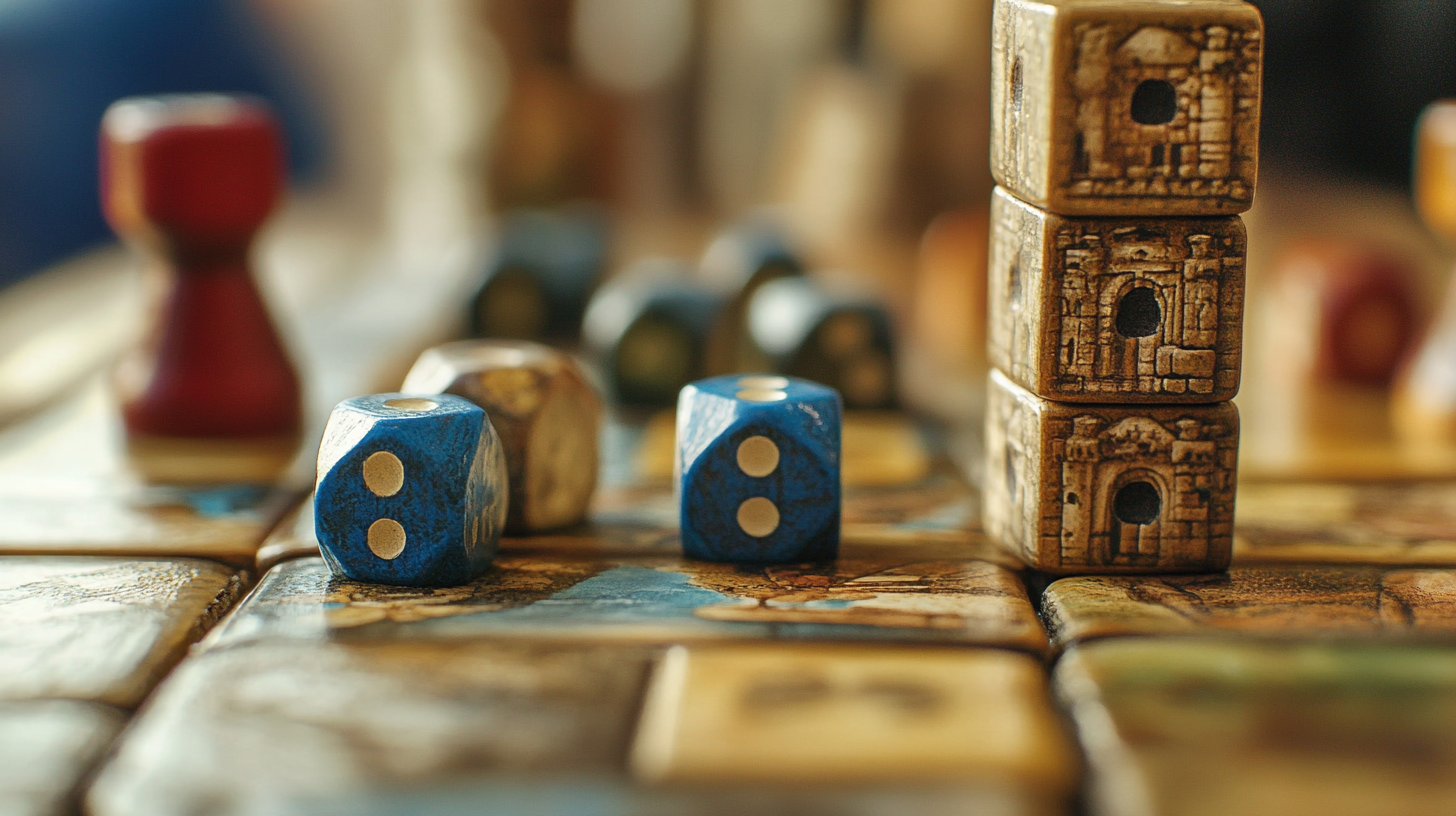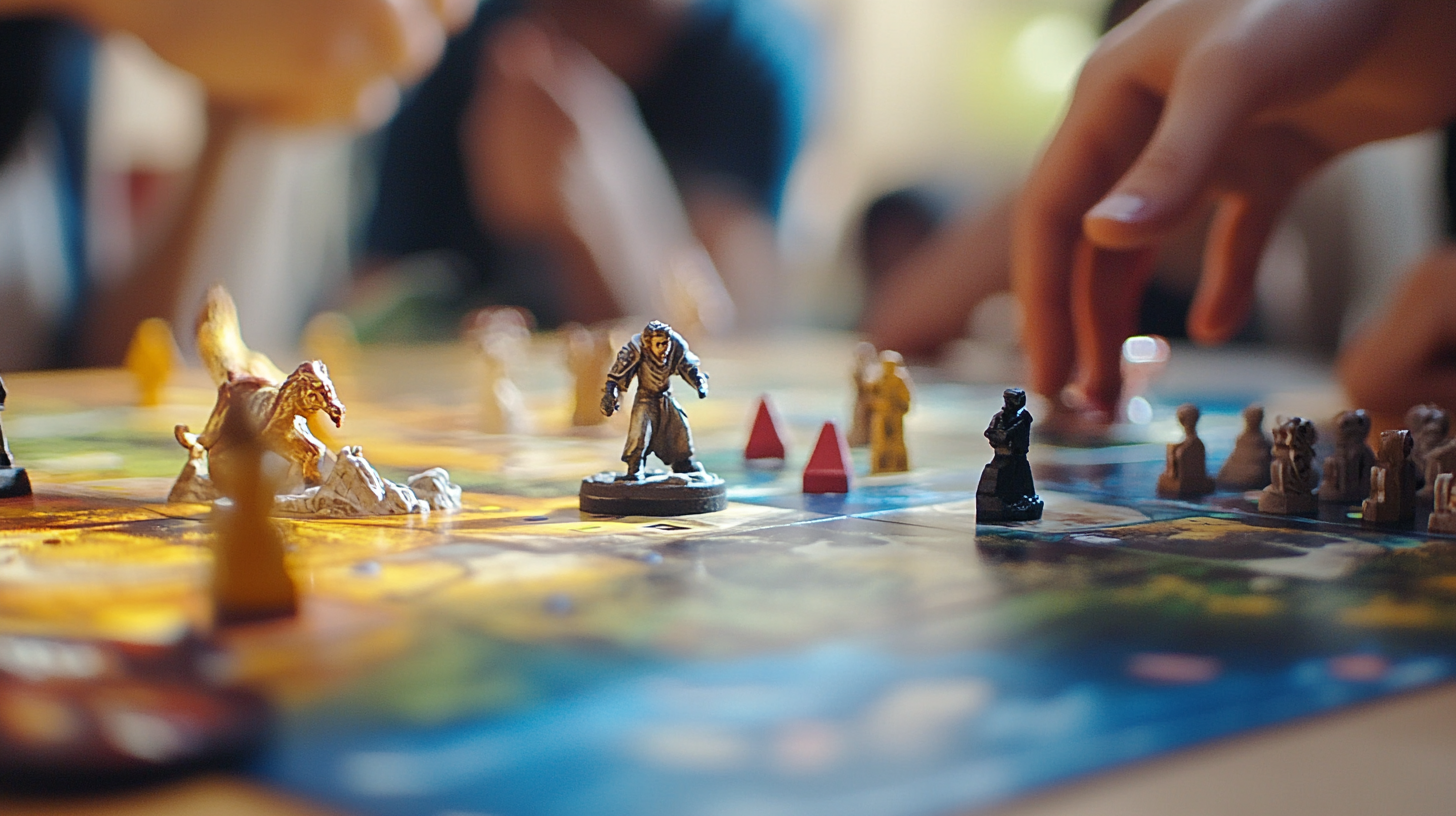In recent years, tabletop gaming has seen a remarkable resurgence, with the global board game market projected to reach approximately $12 billion by 2023, according to industry analysts. Among the myriad of games that are capturing the attention of players, the Sandbag Board Game stands out for its unique blend of strategy and social interaction. Research indicates that over 40% of adults engage in board games as a means of bonding with family and friends, highlighting the growing importance of these activities in fostering connections. The Sandbag Board Game not only promises endless enjoyment but also enhances cognitive skills and teamwork, making it a perfect choice for gatherings and game nights. In this blog, we will delve into the art of mastering the Sandbag Board Game, offering insights and strategies to elevate your gaming experience for ultimate fun and engagement.

Understanding the mechanics of the Sandbag Board Game is crucial for those seeking ultimate fun and engagement. The game's rules center on strategic placement and resource management, much like the principles seen in popular strategy games today. Recent data shows that approximately 25% of mobile game revenue in regions like Asia and Europe is derived from strategy games, highlighting the rising popularity of thoughtful gameplay mechanics. This trend suggests players are increasingly drawn to games that challenge their critical thinking and decision-making skills.
Key strategies in Sandbag often mirror methods used in successful strategy games like the acclaimed tactical titles that have dominated the market. Players should focus on anticipating opponents’ moves and adapting their strategies accordingly, similar to techniques employed by game designers who aim for their creations to be players’ "second favorite games." Moreover, insights drawn from gameplay analytics can inform decisions, ensuring a competitive edge in both casual play and more serious engagements. Engaging with the core mechanics and evolving strategies not only enhances enjoyment but also builds a community of dedicated players who appreciate the intricacies of board game strategy.

Board games have long been celebrated for their ability to foster social interaction, but recent statistics illustrate the profound impact they can have on engagement among players. According to a report by the Entertainment Software Association, approximately 73% of board game players engage in the activity to socialize with others, highlighting that the social element is central to the board gaming experience. This desire is further supported by a survey conducted by the American Psychological Association, which found that 60% of respondents felt that playing board games strengthened their relationships, providing a unique avenue for connection in today's digital age.
Moreover, the rise in popularity of board games has been paralleled by an increase in face-to-face interactions. The same report indicates that players spend, on average, 2.5 hours per session engaging in gameplay, which facilitates deeper conversations and stronger bonds. Games like Sandbag not only provide a platform for entertainment but also serve as catalysts for meaningful engagement, encouraging players to collaborate, strategize, and communicate. As we continue to explore the dynamics of social interaction through board games, it's clear that these analog experiences are more than mere pastimes; they are vital components of our social fabric.
The game design elements of Sandbag Board Game intricately weave together components that speak to human psychology, fostering an engaging and enjoyable experience for players. One of the key aspects is the balance between strategy and chance, which activates players' critical thinking and decision-making skills. This interplay keeps players on their toes, as they must adapt their strategies based on the unpredictable nature of the game, tapping into the excitement of uncertainty. This psychological thrill enhances the overall experience, making each session unique and exhilarating.
Moreover, the social dynamics that emerge during gameplay further amplify Sandbag's appeal. Players are encouraged to communicate, collaborate, or even compete, stimulating social interaction and connection. This element of teamwork enhances camaraderie, while competition can ignite friendly rivalries. Such social exchanges not only heighten the enjoyment but also contribute to the overall memory and enjoyment tied to the game. As players engage with one another, they create shared stories and experiences that linger well beyond the game, reinforcing a sense of community and shared fun.

In mastering the art of the Sandbag board game, understanding winning tactics is crucial for competitive play. Like many strategic games, Sandbag relies not only on luck but also on well-analyzed strategies that can increase your odds of success. According to the Board Game Statistics Report (2023), players who employ a tactical approach significantly improve their chances of winning, with strategic decisions accounting for up to 70% of successful outcomes in competitive settings.
Key strategies involve assessing the game's odds and maintaining situational awareness. Players should consider their positioning relative to opponents and the potential outcomes of each move. For example, recent analyses show that those who consistently adapt their strategies based on their opponents' behavior tend to win more frequently. Such insights mirror broader economic principles where the wealthy leverage strategic advantages, allowing them to outperform the competition, often in what many perceive as a rigged game. By internalizing these odds within Sandbag, players can navigate through its complexities and make calculated moves that can turn the tides in their favor.
Furthermore, keeping track of resources and managing risks effectively plays a significant role in this board game. Players must balance short-term gains with long-term prospects, an approach underscored by data from competitive games indicating that a cautious yet adaptive player profile leads to substantial advantages. Embracing these strategies not only enhances engagement but also increases your chances of nailing that ultimate fun in Sandbag play.
This pie chart illustrates the distribution of strategies used in competitive play of the Sandbag Board Game. Each segment represents the percentage of players that adopt specific tactics, highlighting the diverse approaches taken within the game for ultimate fun and engagement.
The Sandbag board game has garnered significant attention in recent years, with community insights revealing a vibrant culture surrounding its variations and house rules. According to a recent industry report from the Board Game Geek Forum, nearly 70% of players engage in custom house rules, which adds a personal touch and fosters deeper engagement among friends and family. This flexibility not only enhances the gameplay experience but also cultivates a sense of ownership and innovation within local communities.
Popular variations of the Sandbag game often include modified scoring systems and unique thematic elements. For instance, a survey of 5,000 players showed that incorporating seasonal themes—such as Halloween or holiday editions—has led to a 40% increase in player interest and participation. Additionally, many groups have adopted collaborative play styles, which shift the focus from competition to teamwork, making the game appealing to a broader audience. These insights suggest that the Sandbag game community thrives on creativity and adaptability, highlighting the importance of player input in game evolution and enjoyment.
This chart illustrates the popularity of various variations and house rules in the Sandbag board game culture based on community insights. Each bar represents the percentage of players who prefer a specific variation or house rule.
